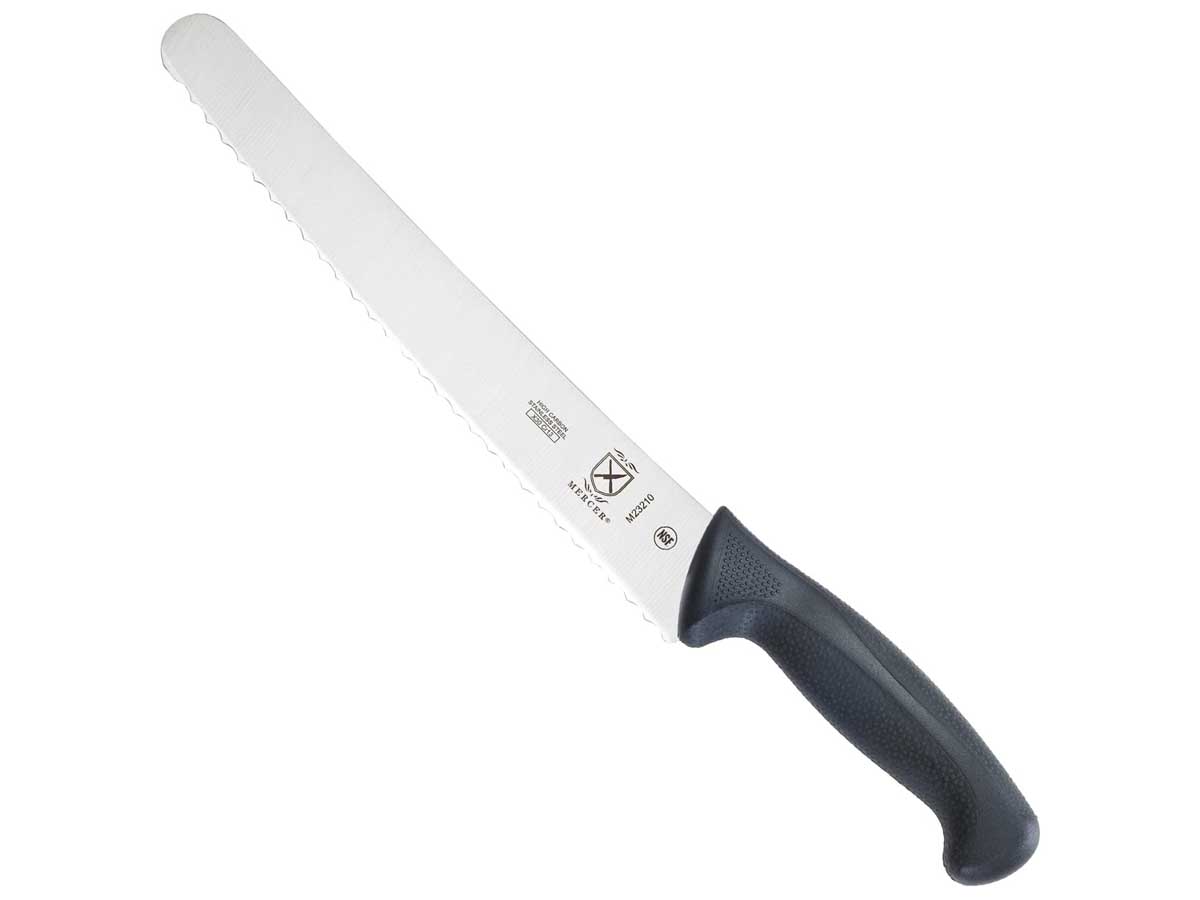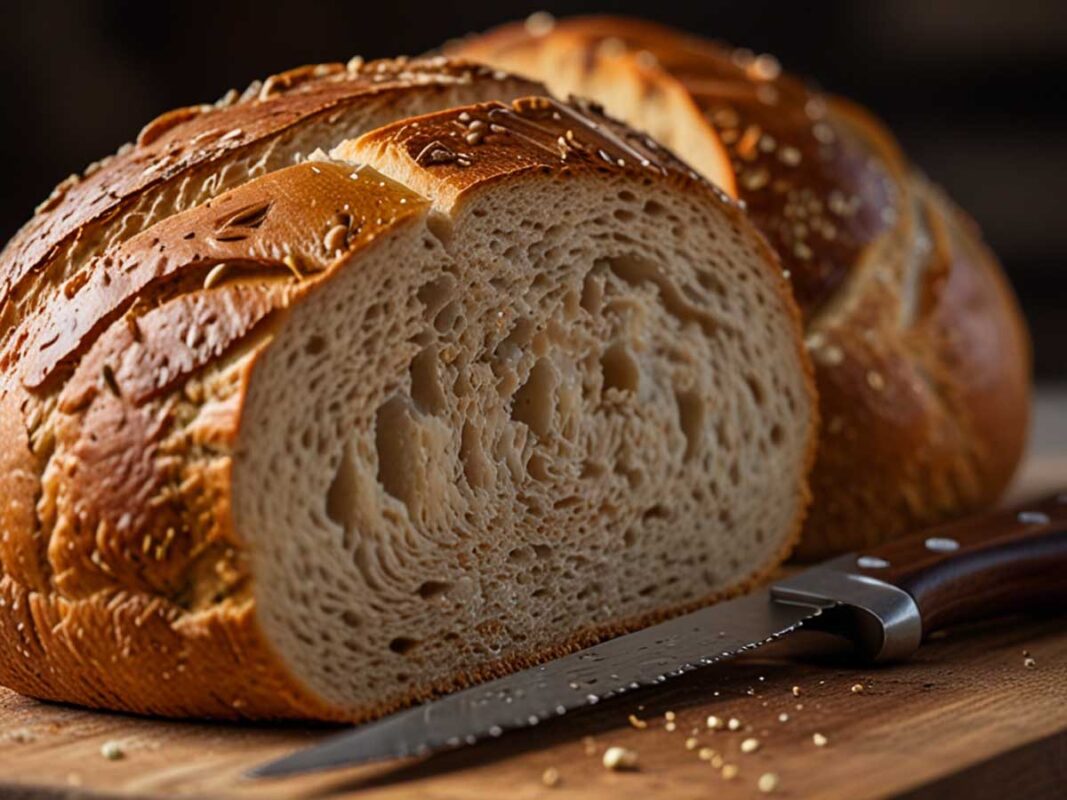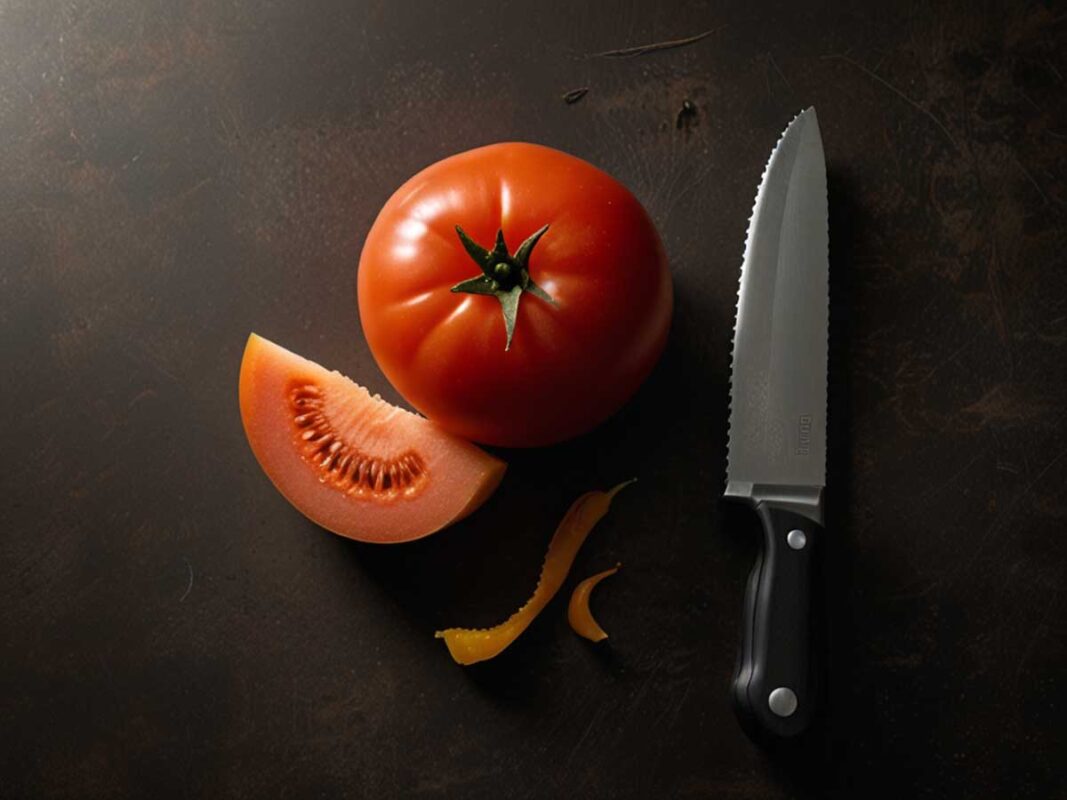What Is a Bread Knife Used For? Essential Kitchen Tips and Tricks

A bread knife is a kitchen essential that goes beyond its primary purpose of slicing bread. With its serrated blade, it’s designed to cut through crusty loaves without crushing the soft interior.
However, its uses aren’t limited to just bread. This versatile kitchen tool can handle various foods, making it a must-have for both outdoor enthusiasts and chefs. Let’s dive into the many ways a bread knife can enhance your food prep.
What is a Bread Knife?
A bread knife is a kitchen tool specifically designed with a serrated blade. This knife typically ranges from 7 to 10 inches in length. The serrated blade features a row of sharp teeth that make it ideal for sawing through tough surfaces like crusty bread. Unlike smooth-edged knives, the serrations grip and cut through food with ease, making it indispensable for slicing without squishing.

Primary Uses of a Bread Knife
Slicing Bread
One of the main uses of a bread knife is slicing bread. Whether you’re dealing with soft bread, crusty bread, or sandwich bread, the serrated blade makes the job easy. Here’s how it works:
- Soft Bread: For loaves like brioche or white bread, the serrations allow you to cut through the soft texture without squishing it.
- Crusty Bread: When slicing a baguette or a crusty artisan loaf, the serrated blade cuts through the tough crust while keeping the interior intact.
- Sandwich Bread: It’s perfect for creating uniform slices of sandwich bread, ensuring each slice is perfect for making sandwiches.
- Baguettes: The knife easily handles long, narrow loaves, making it simple to prepare for appetizers or side dishes.

Cutting Cakes and Pastries
A bread knife is surprisingly effective for cutting cakes and pastries. Its serrated edge provides clean cuts without tearing delicate textures.
- Cutting Cakes: When slicing a cake, the serrated edge ensures smooth cuts, preserving the cake’s shape and layers.
- Leveling Cakes: The long blade is ideal for leveling cake layers, making it easier to stack and frost them.
- Pastries: Whether you’re cutting through a flaky croissant or a delicate pastry, the bread knife’s design helps maintain the pastry’s structure.

Chopping Fruits and Vegetables
The bread knife isn’t just for baked goods. It’s also handy for chopping fruits and vegetables.
- Soft Fruits: The serrated knife easily slices through soft fruits like tomatoes and peaches without squishing them.
- Tough Skins: It’s also great for cutting through tough-skinned vegetables like squash and melons, where a smooth blade might struggle.
- Versatility: From slicing cucumbers to cutting through pineapple, the bread knife proves its versatility.

Slicing Meats
The bread knife can even be useful for slicing meats. Its serrated blade handles crusty exteriors and tender interiors with ease.
- Roasts: For roast beef or pork, the serrated edge cuts through the crusty outer layer without tearing the meat inside.
- Briskets: When slicing brisket, the knife makes clean cuts, preserving the meat’s texture and juiciness.
- Crusty Meats: Any meat with a tough exterior and soft inside benefits from the bread knife’s design.

By understanding these primary uses of a bread knife, you can make the most of this versatile kitchen tool. Whether you’re slicing bread, cutting cakes, chopping fruits and vegetables, or slicing meats, a bread knife proves to be an indispensable addition to your kitchen arsenal.
Additional Benefits of a Bread Knife
Efficiency and Precision
One major advantage of a bread knife is its cutting efficiency and slicing precision. The serrated blade makes it easy to achieve clean cuts without much effort.
- Cutting Efficiency: The serrated edge bites into tough surfaces quickly, reducing the need for excessive force.
- Slicing Precision: Each cut is clean and precise, which is particularly useful for delicate items like cakes and soft fruits.
- Consistent Results: Whether you’re cutting bread or meat, the bread knife ensures uniform slices every time.
Versatility in the Kitchen
The kitchen versatility of a bread knife makes it a multipurpose knife for various tasks.
- Bread Knife Uses: Beyond bread, it handles cakes, pastries, fruits, vegetables, and meats with ease.
- Outdoor Utility: It’s also a great tool for outdoor enthusiasts who need a reliable knife for food prep in the wild.
- Everyday Tasks: From preparing dinner to hosting parties, the bread knife proves its worth in numerous situations.
Maintaining Your Bread Knife
Proper care is essential for maintaining your bread knife to ensure its longevity and performance.
- Cleaning: After each use, wash the knife with warm, soapy water. Avoid using harsh detergents or scrubbing pads that can damage the blade.
- Drying: Dry the knife thoroughly with a soft cloth to prevent rust. Don’t leave it to air dry, as this can cause water spots or corrosion.
- Storing: Store your bread knife in a knife block, magnetic strip, or a protective sheath to keep the blade safe and sharp.
- Sharpening: While bread knives don’t need sharpening as often as straight-edged knives, it’s a good idea to have them professionally sharpened when they start to dull. The serrated edge requires special tools and expertise to sharpen properly.
By following these tips, you can keep your bread knife in top condition, ensuring it remains a reliable kitchen tool for years to come.
FAQs
Bottom Lines
A bread knife is a versatile kitchen essential that extends beyond slicing bread. Its uses include cutting cakes, chopping fruits, slicing meats, and handling tough-skinned vegetables.
The serrated blade ensures efficient and precise cuts, making it a valuable tool in any kitchen. Maintaining your bread knife with proper cleaning and storage keeps it sharp and effective.
Investing in a high-quality bread knife enhances your cooking experience and proves its worth in various culinary tasks. It’s a must-have for both everyday kitchen tasks and special occasions.
